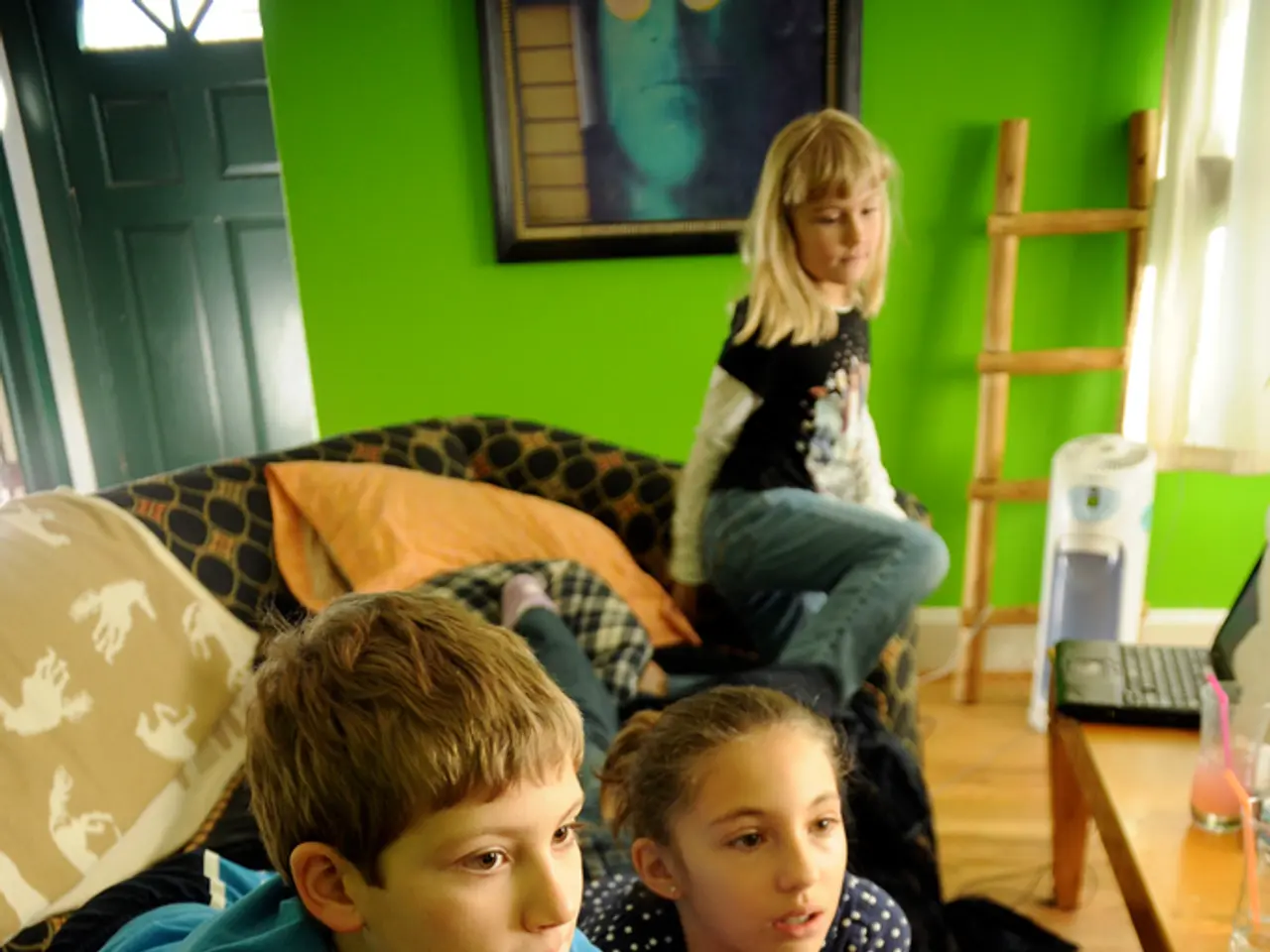Struggling with a child diagnosed with ADHD: Strategies and suggestions for managing frustration
========================================================
Managing the challenges of raising a child with Attention Deficit Hyperactivity Disorder (ADHD) can be demanding, but with the right strategies, caregivers can navigate this journey effectively.
ADHD is the most common childhood behavioral disorder in the United States, affecting children aged 3-17 years. The disorder brings its own set of challenges, including increased stress, disciplinary actions, financial burdens, communication problems, depression, and physical, emotional, mental, and social exhaustion. However, it's essential to focus on victories rather than obstacles and problems associated with ADHD.
For the child, establishing and maintaining a daily structure can provide a sense of stability and predictability. Frequent physical activity and sports can help them burn off energy, improve sleep quality, and cope with the condition more effectively. Instead of offering tangible treats, rewards could include activities with a parent, promoting bonding and fostering a positive environment.
Caring for a child with ADHD can cause issues with emotions, finances, and family dynamics. It's crucial for caregivers to prioritize their own well-being through consistent self-care practices, setting realistic expectations, delegating or sharing caregiving responsibilities, and building a strong support network. This could involve joining ADHD caregiver groups, seeking professional help, or embracing understanding ADHD as a neurological condition to foster empathy and patience.
Effective self-care strategies for caregivers include:
- Establishing predictable routines and clear communication to reduce household stress and provide stability for the child.
- Practicing mindfulness or relaxation techniques regularly to reduce caregiver stress and boost emotional resilience, which also models healthy coping for children.
- Using organizational tools and visual aids to manage daily responsibilities and minimize overwhelm.
- Delegating tasks and sharing caregiving duties to prevent burnout.
- Seeking professional support, including therapy or counseling when needed, to maintain mental health.
Maintaining balanced lifestyle habits at home, such as ensuring proper sleep, diet, and regular physical activity for the child, also indirectly supports caregiver well-being by improving child behavior and reducing stress.
Disruptions in school performance for children with ADHD may be addressed by special education services and programs offered by schools. Parents may speak with their child's teacher about making accommodations, such as seating the child near the teacher and using volunteer or peer tutors.
Children with ADHD may have trouble making friends. Parents can model social skills and enlist help from a therapist in teaching appropriate behavior. A significant change in daily structure can cause stress and behavioral difficulties, so creating a regular schedule of tasks can add valuable stability to a child's life.
The stress and exhaustion of parenting a child with ADHD can take a significant toll on a caregiver's physical and mental health. It's important for caregivers to contact a healthcare professional if they feel depressed, exhausted, or frustrated. Speaking with a school guidance counselor or teacher may also help.
In summary, combining emotional self-care, practical routine-building, social support, and professional guidance forms an effective approach for caregivers managing the demands of raising children with ADHD. By implementing these strategies, caregivers can create a nurturing and supportive environment for their child, promoting their child's growth and development while ensuring their own well-being.
[1] Mayo Clinic. (2021). ADHD in children: Diagnosis and treatment. [online] Available at: https://www.mayoclinic.org/diseases-conditions/adhd/diagnosis-treatment/drc-20370214
[2] National Institute of Mental Health. (2021). Attention Deficit Hyperactivity Disorder (ADHD). [online] Available at: https://www.nimh.nih.gov/health/topics/attention-deficit-hyperactivity-disorder-adhd/index.shtml
[3] Centers for Disease Control and Prevention. (2021). Data and Statistics About ADHD. [online] Available at: https://www.cdc.gov/ncbddd/adhd/data.html
[4] Understood.org. (2021). ADHD and Sleep. [online] Available at: https://www.understood.org/en/learning-attention-issues/child-learning-disabilities/adhd/adhd-and-sleep
[5] Child Mind Institute. (2021). Parenting a Child with ADHD. [online] Available at: https://childmind.org/article/parenting-a-child-with-adhd/
- Incorporating science-backed strategies from health-and-wellness resources, such as mindfulness exercises and structured routines, could be beneficial for both the mental health of parenting individuals and the overall family health.
- A caregiver might consider seeking professional help, like counseling or therapy, to manage their own emotional well-being, especially during challenging periods, much like how children with ADHD might benefit from pharmaceuticals like Pfizer's treatments, as part of a comprehensive approach to managing ADHD.
- Engaging in discussions with the child's caregiver, school, or mental-health professionals about implementing appropriate accommodations and finding effective solutions to address difficulties in areas like social interaction or school performance can contribute significantly to the child's development and well-being.
- By fostering a supportive environment that prioritizes open communication, self-care, and resilience, parenting a child with ADHD can be transformed into an opportunity for growth for both the parent and the child, ultimately strengthening the family-health dynamics and promoting overall wellness.




